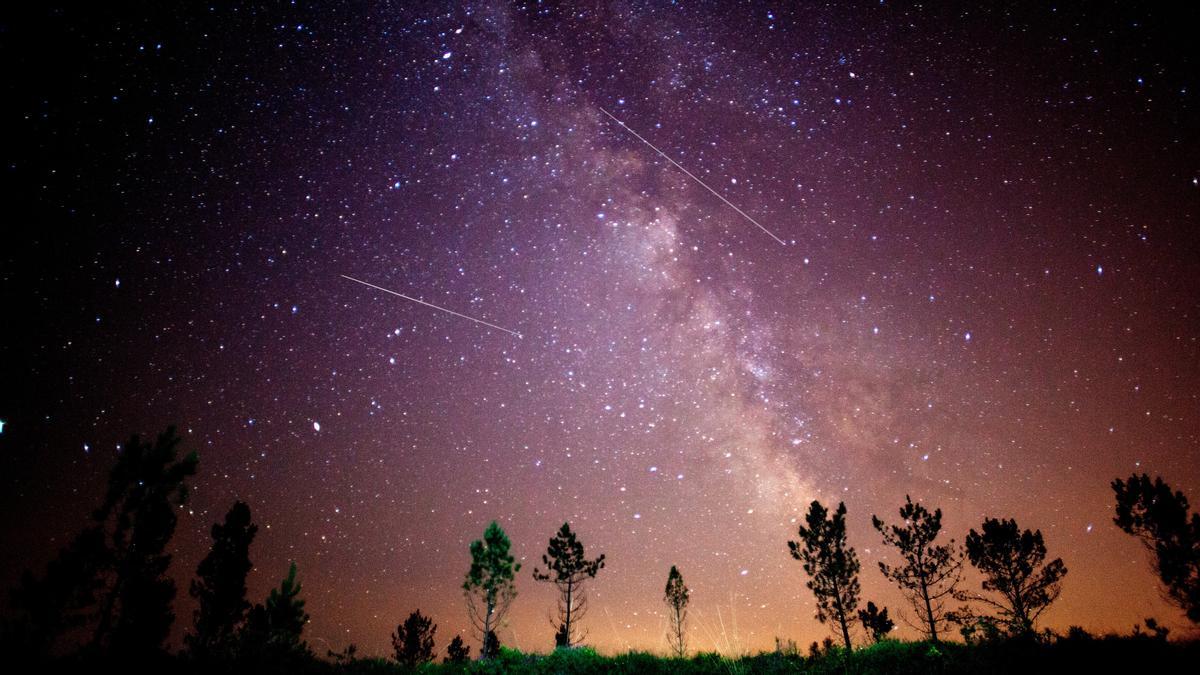Despite the fact that nights are shorter because there are more daylight hours and contrary to logic, summer is a perfect season to see astronomical phenomena. Few, yes, precisely for this reason: because there is more light and more daylight hours, they are more difficult to produce.
But the few that there are can be seen clearly because summer, which officially began on June 21 at 4:58 p.m., is usually accompanied by clear skies.
Thus, after the change of season and the summer solstice -the longest day of the year- the first full moon has arrived, which is also the first summer supermoon. Known as the deer moontook place on July 3.
manhattanhenge
He July 12 Manhattanhenge occursa contraction between Manhattan (New York district, in the USA) and stonehenge (United Kingdom), the latter place where the sun aligns with the stones on the solstices. And as its name indicates, that is what it is about: alignment of the sun at sunset in an east-west direction with the streets of the main urban layout in Manhattan. It is an event that it happens only twice a year and the recommended recommendations for viewing are streets 14, 34, 42, 57 and 79.
He July 30-31 the peak moment of the Delta Aquarids meteor shower. The Delta Aquarids They are shooting stars visible at a average height of 100 kilometers, and that can be enjoyed from areas with low light pollution. The area where the fleeting ones appear to come from occurs in the Aquarius constellation.
Less intense and less visible
Compared to the Perseids it is a less intense rain in terms of the number of meteors observed, but since they are slower, longer and with more persistent trails, they can produce a greater visual impact in the observer. On the night of the last day of July, the moon will be 95.6% full (on July 17 it will be in a new phase), which will make it difficult to observe the aquarid rain.
On August 1 comes the second supermoon of summer, the sturgeon moon. It is called the sturgeon because it is the time when Native Americans fished more easily That large fish in the great rivers and lakes of the country.
Mercury at its best
On August 9, just after sunset, it will be possible to capture Mercury at its best east elongation. At that time, the observation conditions will be optimal and this planet will be seen in its maximum splendor. And all this, despite the fact that it is one of the most difficult to observe with the naked eye because, being an inferior planet, like Venus, it has its orbit very close to the sun.
the night of August 12-13 It has the high point of another spectacular meteor shower, the Perseids, popularly known as tears of saint lawrencea meteor shower that occurs in summer as a consequence of the entry of celestial bodies into the earth’s atmosphere. In the specific case of the Perseids, the fragments come from the Comet 109P/Swift-Tuttle that, at a certain moment, comes into contact with the Earth’s atmosphere. Although it has not been scientifically proven, it is speculated that the term perseids could be related to perseus constellation. The fact that the moon is at 10% of its phase will mean that, if the skies are clear, the rain can be easily observed.
Saturn and its rings, visible
the night of August 27th Saturn reaches its opposition, being brighter than at any other time of the year. This will be the perfect night to view and photograph the planet and its rings.
The last supermoon of summer it occurs on August 31 and is a very special supermoon. Is called blue Moon and it is only called that when a month of the year has two full moons, so only one blue moon can be glimpsed every two or three years, with minor exceptions. The last precedent was also in August, but from 2021.
The next supermoon, the fourth and last of the year, will be on September 29Yeah in autumn.
Neptune and Mercury close the summer
Related news
Finally, at the end of the summer, Neptune reaches its opposition, appearing brighter than at any other time of the year (on September 19) and on the 22nd, before the beginning of autumn 2023 -which begins on September 23 at 8:50 a.m.-, Mercury will reach its maximum west extension.
In addition, and during most of the nights in summer, you can see the so-called summer triangleformed by the stars vega (from the constellation Lyra), deneb (from the constellation Cygnus) and altaïr (from the constellation Aquila). Each of those three stars is the main one in its constellation.

